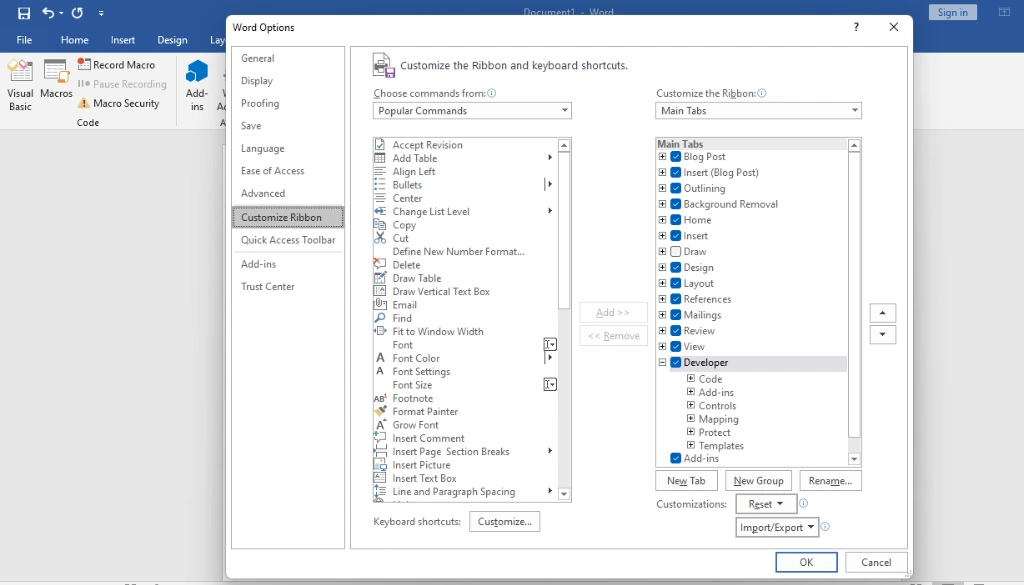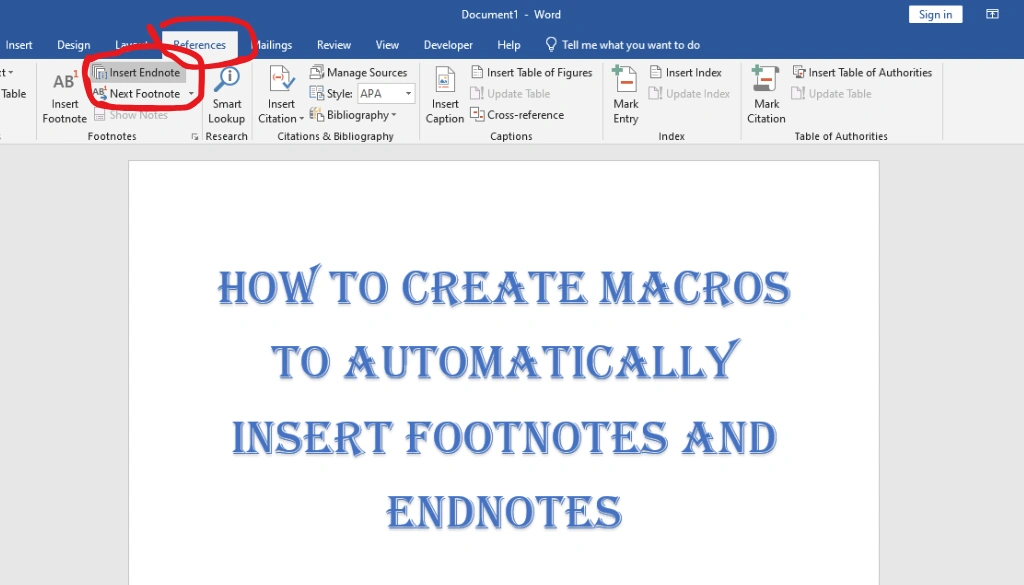Tired of adding footnotes and endnotes by hand? Many people spend hours doing this boring task, but there’s an easy fix. By using macros, you can save time and make your work faster. In this guide, we’ll show you how to create macros to automatically insert footnotes and endnotes, making your work simpler and more efficient. Knowing how to create macros to automatically insert footnotes and endnotes can save you a lot of time.
If you’re a student, researcher, or writer, automating repetitive tasks can save you lots of time. It also helps you stay focused on writing instead of formatting. Let’s get started!
What Are Macros and Why Should You Use Them?

Macros are sets of actions that can be recorded and replayed to do repetitive tasks. They help automate things that take multiple steps, reduce mistakes, and save a lot of time. If you work on documents that need a lot of references, like academic papers, macros for footnotes and endnotes can be really helpful.
Benefits of Using Macros for Footnotes and Endnotes
- Efficiency: Macros can quickly add footnotes or endnotes without interrupting your writing.
- Consistency: Using macros makes sure all your footnotes or endnotes look the same.
- Save Time: Automating this task lets you focus on writing instead of adding references.
Now, let’s see how you can create these macros step by step. For more details on automating text formatting, you can check this guide.
Step-by-Step Guide to Creating Macros for Footnotes and Endnotes
1. Setting Up Macros in Microsoft Word

To create macros for adding footnotes or endnotes in Microsoft Word, follow these steps:
- Open the Developer Tab: If you don’t see the Developer tab, you need to add it. Go to “File” > “Options” > “Customize Ribbon” and check the box next to “Developer.”
- Record a New Macro:
- Click on the “Developer” tab.
- Select “Record Macro.”
- Name your macro something easy to remember, like “InsertFootnote” or “InsertEndnote.”

- Assign a Shortcut Key: You can give your macro a keyboard shortcut to make it easy to use. For example, Ctrl + Alt + F for footnotes.
- Perform the Action: Once the recording starts, add a footnote or endnote by going to “References” and clicking “Insert Footnote” or “Insert Endnote.”
- Stop Recording: Click “Stop Recording” on the Developer tab. Your macro is now ready!
2. Automating Footnotes with VBA Code
If you want more advanced automation, you can use Visual Basic for Applications (VBA), which is a programming language that helps automate tasks in Microsoft Office. To master using the VBA editor, take a look at this detailed guide. Here’s a simple VBA code to add a footnote:
- Access the VBA Editor: Press
Alt + F11to open the VBA editor. - Insert a New Module: Right-click on an open area and select “Insert” > “Module.”
- Add the VBA Code:
Sub InsertFootnote()
Selection.Footnotes.Add Range:=Selection.Range
End Sub- Run the Macro: You can now run this macro anytime to add a footnote where your cursor is.
3. Creating Macros for Endnotes
You can also create a macro to add endnotes using this VBA code:
- Insert the Module: In the same VBA editor, add a new module.
- Use This Code:
Sub InsertEndnote()
Selection.Endnotes.Add Range:=Selection.Range
End Sub- Assign a Shortcut: Give a keyboard shortcut in Word to run this endnote macro quickly.
Tips for Optimizing Macros for Footnotes and Endnotes
1. Assign Easy-to-Remember Shortcut Keys
Assigning easy shortcut keys can improve your workflow. For example, using Ctrl + Alt + N for endnotes can make it easier to remember.
2. Test Before Using Macros a Lot
Always test your macros on a sample document before using them a lot. This makes sure they work correctly and prevents problems like misplaced footnotes or incorrect numbering. Learning how to create macros to automatically insert footnotes and endnotes will help avoid these common issues.
3. Save Macros in a Template
If you use these macros often, save them in your default Word template so they’re ready for every new document you make.
FAQs About Creating Macros for Footnotes and Endnotes
Q1: Can I create macros for other repetitive tasks in Word?
Yes! Macros can be made for lots of tasks, like formatting text, adding headers, and more. The possibilities are endless.
Q2: Are macros safe to use?
Yes, macros are safe if you create them or get them from trusted sources. Be careful with macros from unknown sources since they could have harmful code.
Q3: What if I need to edit a macro later?
You can edit macros by going into the VBA editor (Alt + F11). Find the macro under “Modules” and make changes to the code.
Q4: Do macros work across different versions of Word?
Macros usually work in different versions of Word, but there might be small differences depending on the version. If you run into issues, you can check out this troubleshooting guide for common macro problems.
Q5: Can I share macros with others?
Yes, macros can be exported and shared as part of a Word template, making it easy for others to use the same automated tasks.
Troubleshooting Common Macro Issues
1. Macros Not Running
If a macro isn’t running, check that your Word settings allow macros to run. Go to “File” > “Options” > “Trust Center” > “Trust Center Settings” > “Macro Settings” and enable all macros (make sure you understand the risks before doing this).
2. Shortcut Keys Not Working
Sometimes the shortcut keys you choose might conflict with existing Word shortcuts. Make sure your chosen keys aren’t already being used, or pick a new combination.
Conclusion: Save Time and Focus on What Matters
Creating macros to add footnotes and endnotes can make your writing process faster, more consistent, and less prone to mistakes. Understanding how to create macros to automatically insert footnotes and endnotes will ensure you get consistent results every time. Whether you like recording macros or using VBA code, these tools can save you time and help you focus on what’s important—your writing. For more information on macros, you can visit the Microsoft Office support page.
Give it a try and see how much more productive you can be. Don’t let repetitive tasks slow you down—automate them and keep moving forward. Feel free to share your experience or ask questions in the comments below!
1 thought on “How to Create Macros to Automatically Insert Footnotes and Endnotes: A Simple Guide”
Comments are closed.


Pingback: How to Use Research Tool in Word for Your Projects | MSW Tutor.